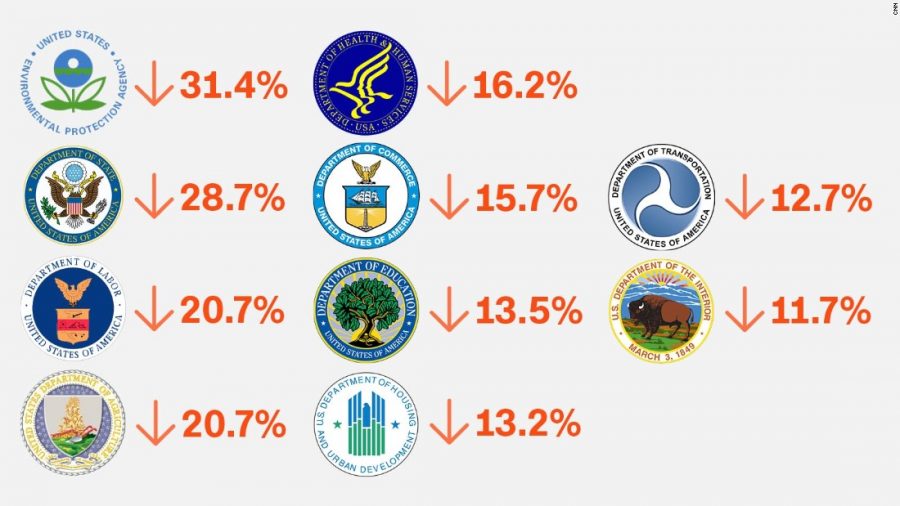Trump’s Budget and What Students Should Know
Trump’s proposed department cuts
April 7, 2017
Just like any student’s budget, the government has a list of things they must account for. Instead of rent or utilities, the government has social security, Medicare, and interest payments on national debt. These items are considered mandatory and make up about 73% of the federal budget.
That leaves a 27% portion that is “discretionary,” and can be adjusted by the President and leadership. This includes things like the Environmental Protection Agency, Department of Education, NASA, and various other departments. President Trump is proposing to eliminate funding for 19 different departments, and that will impact students no matter which side of the aisle they sit on. The full text of the budget can be found at NPR: http://www.npr.org/2017/03/16/520379061/read-president-trumps-budget-blueprint
Under this proposed budget the Education Department will receive a 14% reduction, which equates to about $9.2 billion. While much of the funding for public school systems comes from the states themselves, this could still leave impact in Wisconsin and on college campuses around the state. $732 million was eliminated for the Federal Supplemental Educational Opportunity Grant program. This program specifically works to provide aid for college students on a financial need basis, which could affect a student’s ability to attend school.
Meanwhile, the budget does attempt to safeguard Pell Grants, which also serves students on a financial need basis. The budget does not cut anything from the Pell Grant program, but it does cancel carryover funding of $3.9 billion to level funding. This budget also maintains $13 billion for programs that help students with special needs.
For the students and faculty who have military experience, there is a $4.6 billion increase to Veterans Affairs. According to the budget, 11 million veterans use the medical care provided by the government. This increase will go towards improving patient care and hiring new medical staff, including doctors and nurses. This is also intended to help veterans transition into civilian life, and hopefully keep them out of homeless shelters. Although, it is unclear about art therapy programs for veterans, as those would fall under the National Endowment for the Arts (NEA).
The NEA and NEH (National Endowment of the Humanities) faces a complete elimination under this proposed budget. Originally, the NEA received about $1 billion from the federal government, and that has since been reduced to $0, which is expected to face bipartisan opposition by congress (washingtonpost.com).
Programs that fall under the NEA include things like the Corporation for Public Broadcasting (PBS, NPR), and the Institute of Museum and Library Services, which involves the Smithsonian Institute. When signing the NEA into law President Lyndon B. Johnson commented, “Art is a nation’s most precious heritage. For it is in our works of art that we reveal to ourselves, and to others, the inner vision which guides us as a nation. And where there is no vision, the people perish” (washingtonpost.com).
Much like the state budget that Gov. Walker released, these are only proposed changes. Both houses of Congress will review, amend, and vote on the budget. Finally, President Trump will have the option to either veto or sign the budget into law. So, this will be an essential topic for students and Wisconsinites to follow in the upcoming months.






